It often occurs to many bikers that while purchasing a used bike they do not have an idea of whether it has tubeless tires or not.
“One of the easiest ways to check whether a tire is tubeless or not is to check what kind of valve the tires possess. More precisely, it also depends upon the number of times you get a flat tire while riding your bike.”
But, that’s only the tip of the iceberg!
We are going to dig a little further to differentiate different types of valves to check whether a bike tire is tubeless or not. Let us get right to it
Contents
Whenever you purchase a used bike for mountain biking from a local seller, it’s important to know the minor details of it to get away with any scam or fraud.
One of the issues that many bikers have to face is they cannot tell whether the bike has got tubeless tires or not. According to our experience and research, you can check a tubeless tire of a bike in the following ways:
The very first and most basic thing to do is to ask the seller about the overall specification of the bike as well as its tires. If the seller confirms that the tires are tubeless, you should ask him about the brand of tires he has installed on the bike.
If the seller does not know whether the bike tires are tubeless or not, better get away from such a deal as the bike is probably stolen.
It could occur to many bikes that their tires are tubeless, however, there might still be a tube inside them. In that case, Carbon Side Up from Bike Stack Exchange says that one should focus on looking at the valve stem of the bike.
The user makes the following assumptions based on how the valve stem might look like and its relation with a tubeless tire:

Based on these three assumptions, you can easily know whether the tires of a bike you are about to purchase are tubeless or not. The user also says that these assumptions may go wrong, but according to him, they are true in almost 95% of the cases.
Take an in-depth look at valve stems below.
Another way of seeing whether the tires have got tubes or not is to check the position of the valve stem on the wheels.
That said, tires that have tubes have a valve that directly gets inserted into the tire’s rubber. You can use the valve to inflate or deflate the tires accordingly.
In the case of tubeless tires, the valve is usually installed on the rim rather than the rubber plus it’s sealed with a lockring. That’s another easy way to check whether the bike has got tubeless tires or not.
Modern Problems Require Modern Solutions! Based on this meme, you can check the tubeless quality of the tires easily.
Simply check the tire sidewall and see whether they are marked with anything like TR, TL, or UST.
Find other details of the tire and put them in the Google search bar. It will have enough info to show you whether the tires are actually tubeless or not.
Last but not the least, if the tires go flat frequently, that means they are not tubeless. Detach the rubber part from the rim and you will most probably find a tube inside the tires.
Keep track of the number of times your tires get flat or punctured and if it’s more frequent, then you, my friend, are not using a bike with tubeless tires.
Here’s a discussion on Tubeless and Tube Tires you’ll find helpful.
Identify the valve stem on the wheel and if it is Presta sealed with a lockring, then it would certainly mean that the tires are tubeless. Other than that, if the valve goes into the rim rather than the rubber, it would also substantiate the claim of the tires being tubeless.
Last but not the least, check the sidewall of the tires and see whether they are marked as TL (tubeless) or UST (Universal Standard Tubeless). These are some of the ways to know if the tires are tubeless or not.
These are some of the ways to know if the tires are tubeless or not.
The tires are most probably not tubeless if you are getting flat tires or instant punctures on a frequent basis. Better dismount the rubber and you will find a tube laying inside the rubber.
Bikes with tubeless tires remain inflated and maintain their air pressure for a long time. On top of that, bikers will face low flat tires and instant puncture issues while using tubeless tires. In the end, tubeless tires require less maintenance compared to tubed tires.
Checking a used bike from every angle and perspective is important for you because you are about to purchase it with your hard-earned money.
When it comes to checking the tires, simply follow the tips we mentioned above and make your evaluation based on it accordingly.
Tires Tubeless Tires
From riding to school since the age of 13, attending BMX races and events with his dad to himself conquering 50+ trails across the globe.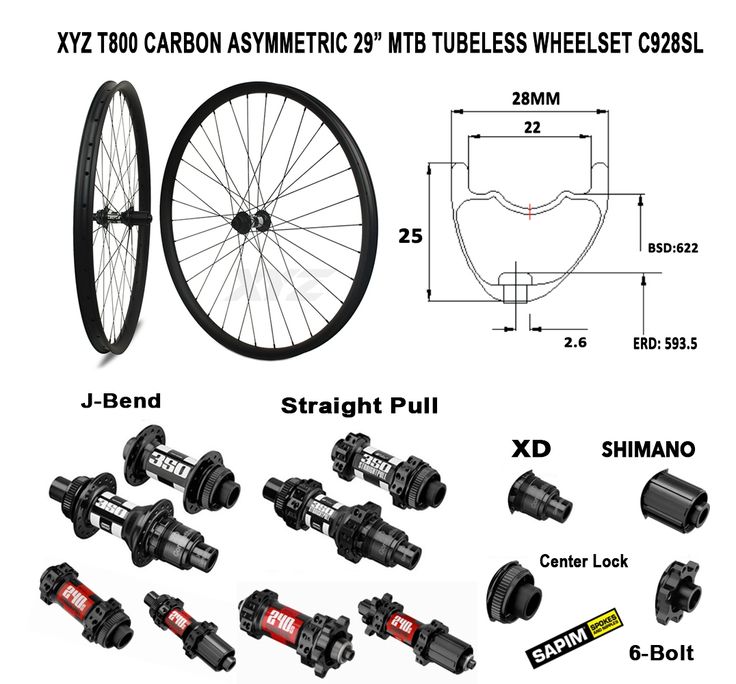 For Rob, his Giant Stance 29 2 2020 is the friend that makes everything better. He is also a proud member of the International Mountain Bicycling Association (IMBA).
For Rob, his Giant Stance 29 2 2020 is the friend that makes everything better. He is also a proud member of the International Mountain Bicycling Association (IMBA).
Asked
Modified 2 years ago
Viewed 58k times
I suspect that the used bike I want to buy might have a tubeless tires, but one is flat. Is there any external feature to look at that would allow easily to tell this for sure?
I have no experience with tubeless tires and would not know how to replace it.
9
While your question of identifying a tubeless tyre has been answered, I think that might not actually be what you have to worry about. A bike might come with tubeless tyres, but that doesn't mean that they're set up tubeless. The tyres might still have a tube in them, so your concern should be identifying whether there's a tube inside or not. The easiest way to do that is to look at the valve stem, because a tubeless valve will almost always be secured with a substantial lockring, whereas a tube with a presta valve might have a little silver lockring or usually nothing at all. Any wheel with a Schrader valve is almost certain to have a tube in it as tubeless Schrader setups are extremely rare. This isn't foolproof, because some people will put a big lockring on a tube and some might put a small one on a tubeless valve, but I'm confident that this will be accurate over 95% of the time.
A bike might come with tubeless tyres, but that doesn't mean that they're set up tubeless. The tyres might still have a tube in them, so your concern should be identifying whether there's a tube inside or not. The easiest way to do that is to look at the valve stem, because a tubeless valve will almost always be secured with a substantial lockring, whereas a tube with a presta valve might have a little silver lockring or usually nothing at all. Any wheel with a Schrader valve is almost certain to have a tube in it as tubeless Schrader setups are extremely rare. This isn't foolproof, because some people will put a big lockring on a tube and some might put a small one on a tubeless valve, but I'm confident that this will be accurate over 95% of the time.
Schrader valve:
Presta valve (tube):
Tubeless presta valve:
7
Look at the tire sidewall for model/name, tubeless tires usually have TL, UST, TR or Tubeless in it; some tires don't (like Schwalbe Pro One), so google the model and see if it's tubeless or not. Keep in mind that some MTB tires can be setup tubeless regardless of what manufacturer claims, in this case you can unseat some tire bead and check if there's tube or sealant residue inside.
Keep in mind that some MTB tires can be setup tubeless regardless of what manufacturer claims, in this case you can unseat some tire bead and check if there's tube or sealant residue inside.
For a tubeless setup you need three things: the right rim, the right tire, the right valve-stem. Carbon side up shows how to identify the valve stem, and the tire and rim should be marked, but you need to check all three, because having tires and rims rated for tubeless may be used with a tube (I do this all the time on riding lawn mowers because their rims suck and leak even though designed for tubeless operation.)
However in your case there is an easy check since there is a flat tire. First look at the valve stem. If it is a presta use your fingers to loosen the stem nut (skip if it is too tight to loosen by hand), then wiggle the tire relative to the rim while watching the valve stem. if wiggling the tire moves the valve stem you have a tube if you feel the tube stretching against the valve stem, you have a tube, otherwise either you have a tubeless setup or a burst tube.
Sign up using Google
Sign up using Facebook
Sign up using Email and Password
Required, but never shown
Required, but never shown
By clicking “Post Your Answer”, you agree to our terms of service, privacy policy and cookie policy
The third method is the most tricky: when you press on the nipple, you can find that it falls inward on the tube tire (of course, if the wheel is slightly lowered and the internal pressure allows you to do this) and remains in place on the tubeless, due to its soldering to the surface of the tire .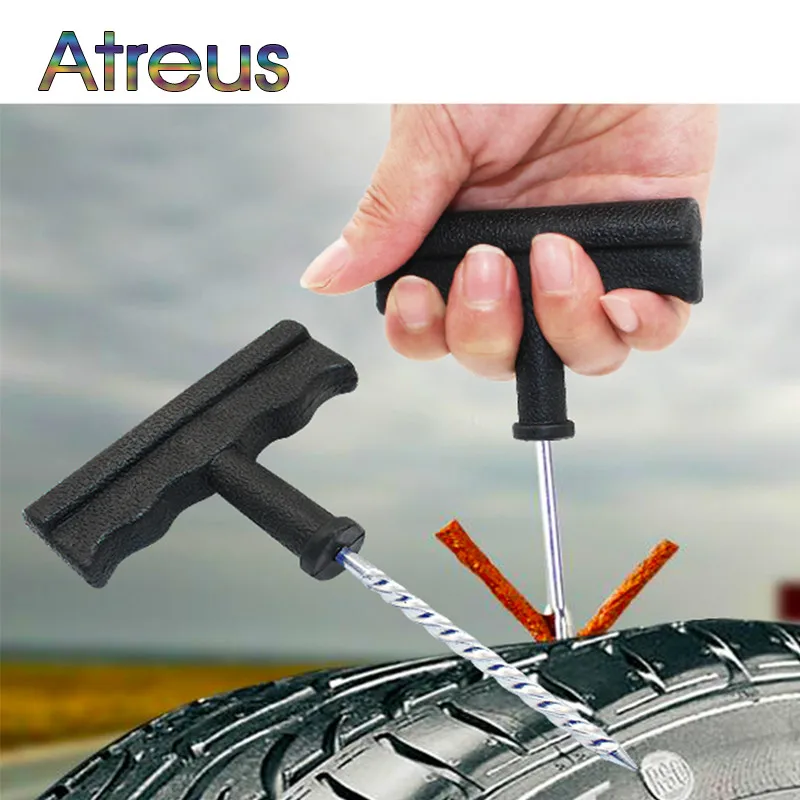
The easiest and most accurate way to figure out what kind of rubber is in front of you is to look for markings on the side of the slope. The inscription "tubeless" indicates that the tire in front of you is tubeless, "tube type" warns that there is a tube inside the tire. There may be abbreviations only for the first letters: T or TT. nine0005
Therefore, manufacturers put special markings on the side of the rubber so that you can understand which tire is in front of you. Tubeless are designated as follows: "T", "TL" and "Tubeless". Chamber: "TT" "Tube Type", the absence of a label is also an indicator of tubeless tire.
In tubeless tires, a special sealant acts as a chamber and the tire fits snugly against the rim walls. ... Tubeless tires are used with special rims, but regular bike rims can also be used
On a tube tyre, it is longer and smoother; on a tubeless tyre, it is short and has a small bead. If you lower the wheel and try to press in the nipple, then the tubeless tire will not allow it to sink, since the nipple is firmly attached to the surface
If you lower the wheel and try to press in the nipple, then the tubeless tire will not allow it to sink, since the nipple is firmly attached to the surface
Tubeless are identified as follows: "T", "TL" and "Tubeless". Chamber: "TT" "Tube Type", the absence of a label is also an indicator of tubeless tire. You can also understand what kind of tire is in front of you by examining the nipple. A long one indicates the presence of a chamber inside, a very short one indicates its absence. nine0005
As the tire name suggests, the main difference lies in the construction itself. The tube tire consists of a tire and a special chamber with a valve, which is inflated with compressed air. ... Tubeless tire itself and a tire and tubes
Tubeless rims have a hump, which is a protrusion on the inside, the task of which is to hold the tire when cornering. From the outside, this element looks like recesses
From the outside, this element looks like recesses
The tubeless tire is not suitable for riding with a tube. All tire manufacturers officially say in unison - tubeless cannot be used with a tube.
The third and final reason is a malfunction of the nipple (inlet - outlet device), located in the so-called "nipple" of the wheel. Air comes out through it. Checking is very simple, you need to salivate your finger and smear the outlet, if bubbles are inflated from your saliva, then the nipple is not working. nine0005
Depending on the internal design, car tires can be chambered or tubeless. The name of each type perfectly conveys the design of the product, since chambered tires have a special chamber (holding air), and tubeless ones themselves serve as a reservoir for air
Volume of sealant
for thin wheels of road, road bicycles - 40-60 ml. for mountain bike wheels size 26-27.5 inches - 75-90 ml for 29-inch mountain bike wheels - 90-120 ml. for wide fatbike wheels - 125 ml.
for mountain bike wheels size 26-27.5 inches - 75-90 ml for 29-inch mountain bike wheels - 90-120 ml. for wide fatbike wheels - 125 ml.
It is strongly not recommended to do this, you can try it only in case of emergency. If you decide to experiment, then you immediately need to prepare for several troubles that may await on the road. The fact is that a tubeless tire should structurally work without any layers inside. nine0005
Therefore, manufacturers put a special marking on the side of the rubber so that you can understand which tire is in front of you. Tubeless are designated as follows: "T", "TL" and "Tubeless". Chamber: "TT" "Tube Type", the absence of a label is also an indicator of tubeless tire.
Tubeless car tires consist of one tire. A 2 mm rubber layer is applied to its inside, due to which the tire does not allow air to pass through.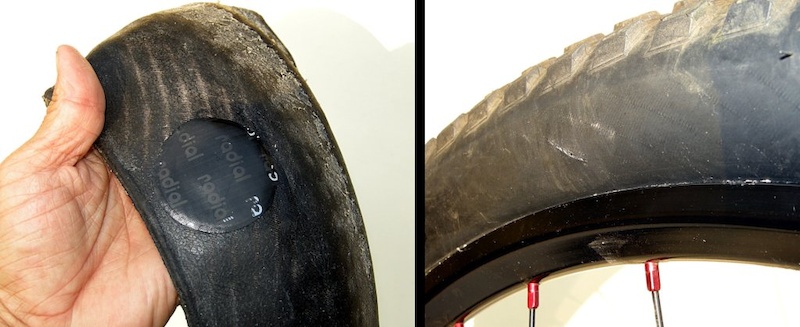 ... The tire bead sits on the rim shelf, in tubeless tires this element has a rounded protrusion, due to which the tire wraps around the bead from two sides. nine0005
... The tire bead sits on the rim shelf, in tubeless tires this element has a rounded protrusion, due to which the tire wraps around the bead from two sides. nine0005
Tubeless tires can hardly be called the know-how of the bicycle industry, however, they still raise questions for many. The topic itself, as a rule, is surrounded by a lot of skepticism and distrust, which are more often explained by a lack of understanding of basic things and a lack of experience in riding such wheels. To dispel all these doubts, we answer the main questions related to tubeless technologies.
These are bicycle tires that do not have a tube. At the same time, tubeless technology is not only about tires. We are talking about a whole wheel system, which also includes a special rim and a sealant that gives the wheel anti-puncture properties. The tubeless concept makes the bike more comfortable to use and improves its riding performance, which will be discussed in order.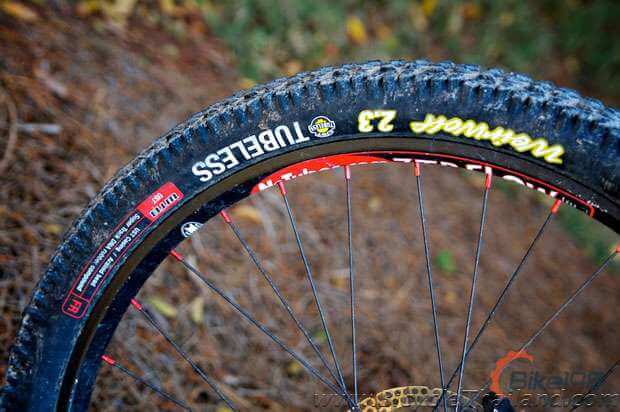 nine0005
nine0005
How long ago did this technology appear and can it be trusted?
Those who hear about bicycle tubeless for the first time usually tend to be suspicious of them. You can dislike this technology for subjective reasons, but you definitely shouldn’t distrust it. Tubeless tubes have been massively used for cars and motorcycles for several decades, and during this time they have not given reason to doubt their reliability.
The first tubeless systems for bicycles appeared in 1999, when the French rim brand MAVIC, in collaboration with tire manufacturer Hutchinson, presented their concept of a simple and effective tubeless wheel. In the 2000s, this technology remained the prerogative of mainly professional athletes, who quickly appreciated its main advantages: lighter weight, more air in the wheel, good "traction" and durability.
In recent years, tubeless has finally ceased to be perceived as something exotic. For example, today a significant part of the MTB and almost all touring cars come with such wheels as standard.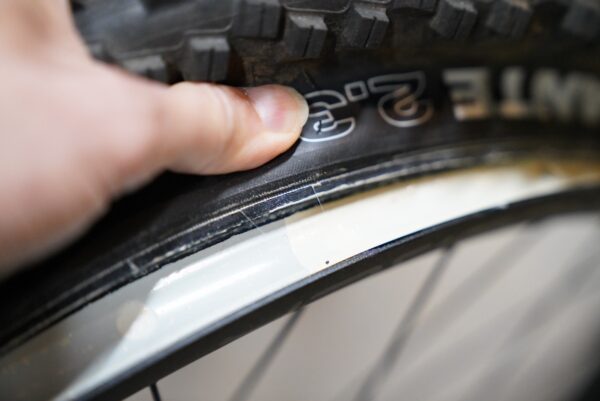 A wide variety of sealants are also available on the market, and the number of those who are discovering the benefits of tubeless technology is steadily increasing. nine0005
A wide variety of sealants are also available on the market, and the number of those who are discovering the benefits of tubeless technology is steadily increasing. nine0005
The tubeless system provides a special rim and tires that are labeled tubeless ready or TR. However, the rims themselves are easy to distinguish visually - they have a low side and characteristic walls with recesses, forming a kind of lock in which the tire cord is wedged when air is injected. Due to this, in the inflated state, the rubber reliably and hermetically “sits” on the rim, without breaking off the wheel even at low pressure. The rim itself is additionally glued with a sealing tape, after which the nipples are installed separately. nine0005
The benefits of tubeless wheels are revealed no matter how often and what kind of bike you ride: whether it's weekend trips, extreme downhill or long-distance touring. Nevertheless, for certain categories of cyclists tubeless still open up more opportunities: first of all, we are talking about those who are seriously passionate about off-road.
Nevertheless, for certain categories of cyclists tubeless still open up more opportunities: first of all, we are talking about those who are seriously passionate about off-road.
When actively driving off-road with tubeless tubes, you can ride on lowered wheels and at the same time not be afraid of such an unpleasant type of puncture as a snake bite. Low tire pressure, in turn, gives better handling, dampens vibrations more effectively and generally provides more comfort on difficult tracks. If we are talking about cyclists, then they appreciate tubeless for their anti-puncture qualities. nine0005
Road bikes also use tubeless wheels. Moreover, they are the pioneers of this technology. But road tubeless tubes are a different story: they are designed for different operating pressures and have tangible design differences. Therefore, further we will talk mainly about those tires that are put on mountain, touring and city bikes.
These are the two rim formats that define the features of a tubeless wheel assembly. BST is a standard that involves the installation of a special sealing tape that prevents air from leaking through the holes in the spokes. This is the most common version of tubeless systems. nine0005
BST is a standard that involves the installation of a special sealing tape that prevents air from leaking through the holes in the spokes. This is the most common version of tubeless systems. nine0005
UST is a blind rim in which an additional bridge isolates the spoke holes. Thus, there is no need for laying a sealing tape. In practice, this greatly simplifies life, because when installing a tire (especially without proper experience), the tape tends to crush, which is why you have to reassemble the wheel. It is easy to guess that such rims also have a drawback - their price.
The tubeless system in the form in which we wrote it above is already a full-fledged wheel, it can be installed on a bicycle and hit the road. But there is an important nuance. First of all, tubeless tubes are valued for their anti-puncture qualities: for this, a small amount of a special liquid, a sealant, is poured inside the tire. nine0005
Yes, you can. But you should not do this. Firstly, this is illogical: for no reason you are depriving yourself of the main advantage of tubeless - the anti-puncture effect. But more importantly, it is very difficult (or even impossible) to inflate such a tire in a completely flat state with a portable pump: to do this, you need either a strong floor pump or a booster. Naturally, no one will take such bulky things with them on the road. Filled with sealant 95% of punctures "seal" without a critical loss of pressure, and in most cases there is no need for even light pumping. Thus, the probability of being with a flat tire is very low.
But you should not do this. Firstly, this is illogical: for no reason you are depriving yourself of the main advantage of tubeless - the anti-puncture effect. But more importantly, it is very difficult (or even impossible) to inflate such a tire in a completely flat state with a portable pump: to do this, you need either a strong floor pump or a booster. Naturally, no one will take such bulky things with them on the road. Filled with sealant 95% of punctures "seal" without a critical loss of pressure, and in most cases there is no need for even light pumping. Thus, the probability of being with a flat tire is very low.
So, if you put tubeless, sealant is still needed. Such fluids are easy to find in any bike shop, they are inexpensive and require replacement on average once every three to four months, so there is no need to talk about any inconvenience. Yes, in order to cope with the fill, you need to acquire a certain skill, but this is much easier than constantly changing broken cameras.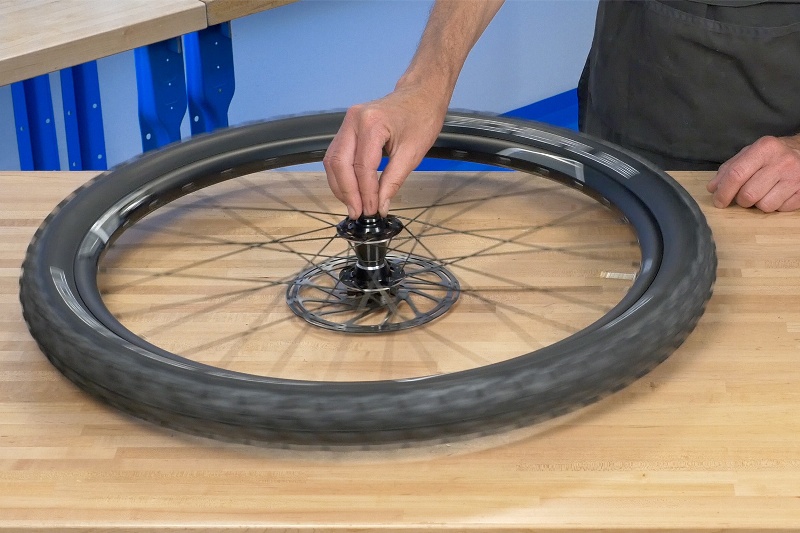 In addition, sealant can be replaced once a season in a specialized service. nine0005
In addition, sealant can be replaced once a season in a specialized service. nine0005
Bicycle sealants are based on fine particles (rubber or polymer fibers) suspended in a liquid carrier. Inside the wheel, the sealant does not polymerize: it is in a liquid state and is distributed along the inside of the tire during movement. When a puncture occurs, the air flow begins to push the solution out. A fine suspension clogs the hole, and the sealant dries quickly. Thus, there is a reliable "sealing" of the puncture. nine0005
If we talk about typical punctures - collisions with thorns, wires, small glasses - such damage is self-healing without a noticeable loss of pressure. Usually, a puncture can only be guessed from a small spot on the surface of the tire. Naturally, the sealant works with more complex damage. You can count on it even if you pierce the wheel with a thick nail, 4-5 mm in diameter. If you don't understand how a liquid can seal such holes, you can watch numerous crash tests on YouTube that demonstrate the miraculous properties of sealants. nine0005
nine0005
The consumption per tire is from 50 to 100 ml. If we are talking about standard MTV tires, the golden mean is about 60 ml per wheel. The exact dosage will always be written on the bottle. It is difficult to get confused even for those who do not like to read instructions: most sealants have measuring containers or a dosage scale on the bottle itself.
Here, too, everything is conditional and depends on the characteristics of the specific composition and intensity of punctures. In the absence of serious damage that entails the leakage of a large volume of sealant, you can easily skate a whole season on one fill. Some cyclists prefer to do an incomplete start-up gas station and gradually add 20-30 ml of fluid every two to three months. You can also navigate by how effectively the sealant works: if you see that small punctures are sealed with a strong deflation of the wheel, it may be that the composition is no longer enough and it needs to be added. Be that as it may, sealant is a very economical thing that lasts for a long time. nine0005
Be that as it may, sealant is a very economical thing that lasts for a long time. nine0005
The sealant inside the tubeless tends to dry out, forming a characteristic film. Whether or not to clean the tire cavity is up to you. This is a purely aesthetic moment, which does not affect the operation of the anti-puncture fluid. The sealant can simply be added as it dries and not bother with unnecessary worries. It is more likely that the tire will completely wear out than it will have time to completely clog with dried filler.
nine0127
Serious damage - large diameter punctures, small cuts, run over nails with subsequent tire rupture - are repaired using special repair worms. These are rubber or fibrous bands that are inserted into the hole to reduce its area and allow the sealant to seal the puncture.
With long longitudinal cuts it is more difficult. Here you need to either sew up the dissection with nylon threads, or stick a patch on the inside of the tire.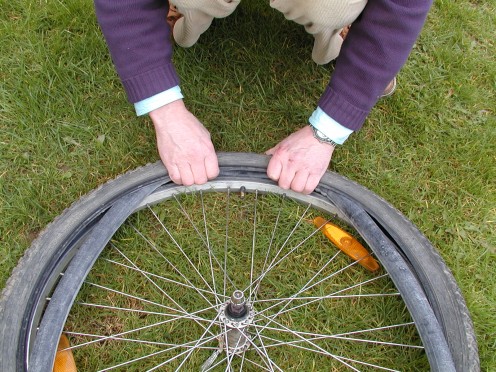 You don’t have to worry about the tightness of the repair site - the sealant will do this work, of course, if it does not have time to leak out. But being able to inflate a completely flat tire with only a portable pump will require skill. nine0005
You don’t have to worry about the tightness of the repair site - the sealant will do this work, of course, if it does not have time to leak out. But being able to inflate a completely flat tire with only a portable pump will require skill. nine0005
In fairness, we note that such complex injuries are rare for most cyclists. But for those who are seriously passionate about off-road, it is better to play it safe with a spare camera. In this case, having caught a cut, you can always drain the sealant, unscrew the nipple from the rim and install a regular camera. And in order not to drive with a “hernia” protruding outward, we recommend placing, for example, a bill folded in half under the cut on the tire.
Tubeless allows you to forget about such an unpleasant form of damage as a "snake bite" forever. It usually happens when at full speed you catch a pothole in the pavement, unsuccessfully jump onto a curb or run into a stone on a downhill.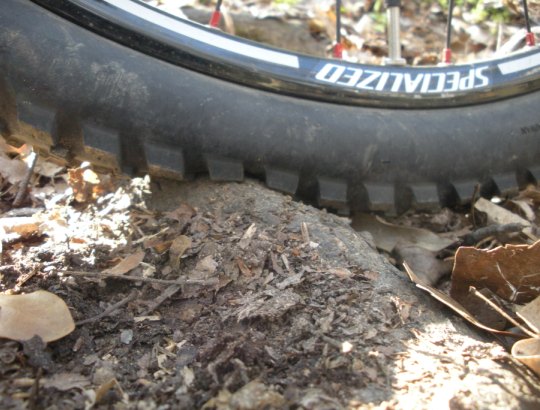 Hitting the edge of a hard object, the tire is crushed, and the rim walls work like incisors, damaging the chamber in two places. In tubeless wheels, this scenario is excluded, because. there is nothing to break through here. Of course, it can be assumed that the rim will cut the tire itself, but this should be a blow of enormous force, which is almost never encountered in practice. nine0005
Hitting the edge of a hard object, the tire is crushed, and the rim walls work like incisors, damaging the chamber in two places. In tubeless wheels, this scenario is excluded, because. there is nothing to break through here. Of course, it can be assumed that the rim will cut the tire itself, but this should be a blow of enormous force, which is almost never encountered in practice. nine0005
Rejection of the chamber increases the volume of air in the wheel. This changes the contact patch (it becomes flatter) and allows the wheels to better absorb off-road bumps. Add here the ability to ride at low pressure, without being afraid of a snake bite, and it becomes completely clear why tubeless lovers of hard off-road riding so idolize. Soft tires with a large contact patch "fit" all the bumps in the road, giving excellent traction on rocks, forest primers and other off-road. nine0005
In addition to traction, tubeless tires improve shock absorption, dampen vibrations better, and generally provide more off-road comfort.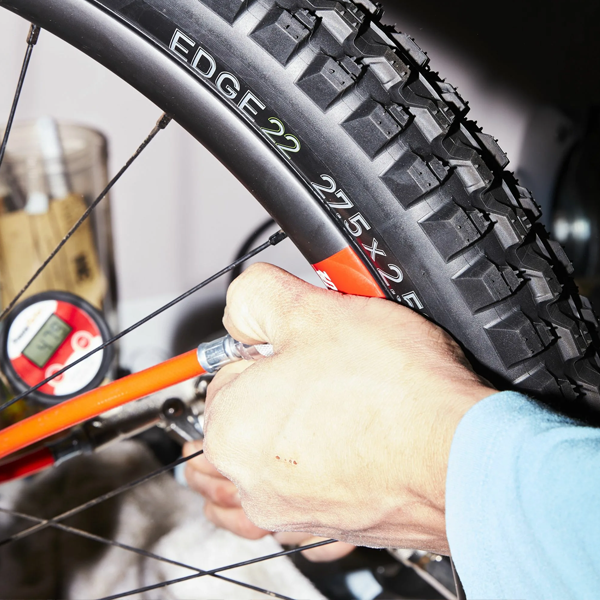 At the same time, to get the most out of this rubber, you need to experiment a lot with tire pressure, trying to find the indicators that will best suit your individual riding style.
At the same time, to get the most out of this rubber, you need to experiment a lot with tire pressure, trying to find the indicators that will best suit your individual riding style.
Finally, the camera is extra grams. By refusing them, you can save an average of 70-100 g of weight on each wheel. For some, this may seem like a formality, but it is worth considering the fact that extra grams on the periphery of the wheel have a stronger effect on driving performance. This difference is especially felt on road bikes: road bikes, gravel, touring. nine0005
They also exist. Moreover, it is far from formal. First, it's the price. The difference becomes especially noticeable when you buy tubeless systems separately: rims, tires + small things (tape, removable nipples, sealant). For tubeless you will have to pay an average of one and a half times more than for ordinary wheels, plus or minus the same class. And if we are talking about more advanced UST rims, then this means another + 30-40% to the cost.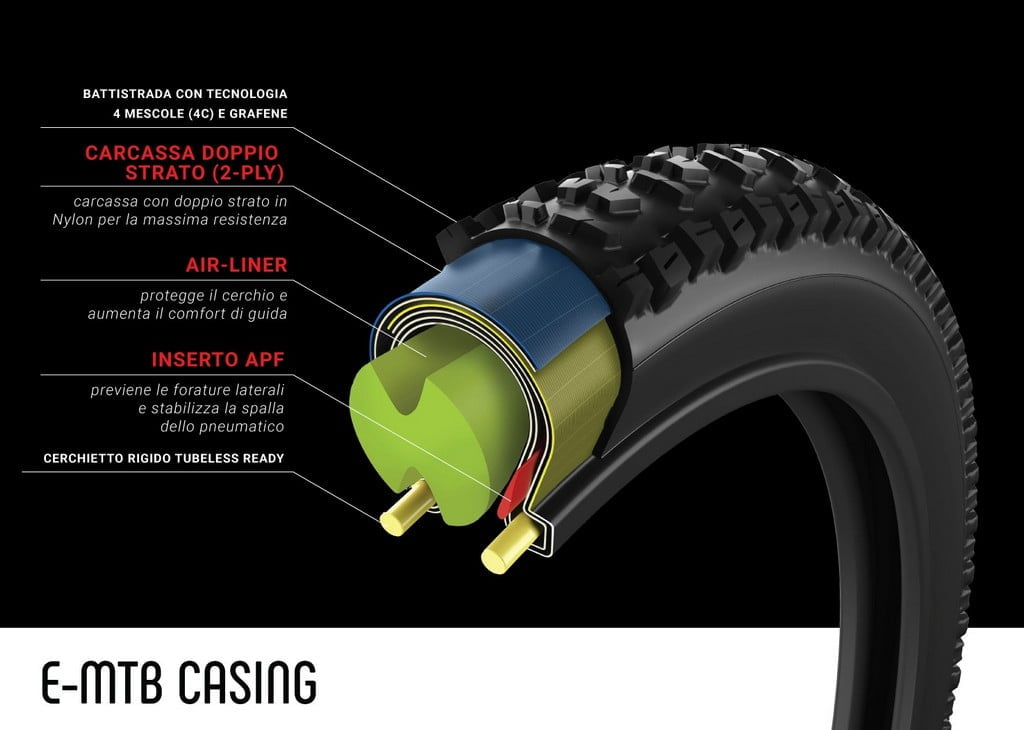
With tubeless by default, everything is more difficult in terms of installation (here we are talking about conventional BST systems). You need to learn how to properly glue the tape, accurately insert the nipples, carefully install tight rubber, making sure not to displace the tape and not fill everything with sealant. On the other hand, all this comes with experience, but what you will always have to put up with is the difficulty with pumping a completely flat tire.
A tubeless tube cannot be inflated until its landing board snaps into place on the rim. To do this, you need to sharply introduce air into the tire. The tire should straighten up and fall into the grooves with a characteristic click - then it can be safely pumped further. This all sounds simple if there is a compressor in the garage. Putting a tubeless tube into the grooves by pumping air with an ordinary floor pump is quite difficult, and almost impossible with a portable bicycle pump. nine0005
All this makes life much more difficult.